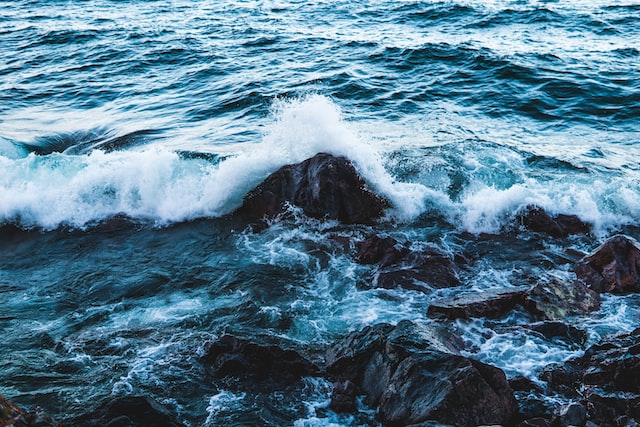Vancouver – The blueprint for a vast network of marine protected areas (MPAs) across the northern third of Canada’s West Coast is being unveiled after more than a decade of work. 15 First Nations, the Government of Canada, and the Government of British Columbia are jointly announcing the endorsement of the Marine Protected Area Network Action Plan (the Action Plan) for the Northern Shelf Bioregion (NSB).
The Action Plan is a model of collaborative governance and provides a planned approach to the establishment of new MPAs in the NSB. It includes a proposed design for the network, and recommendations for potential designation tools, conservation objectives and implementation timelines for the protection of future sites. The completion of the Action Plan represents the output of a truly collaborative partnership by Indigenous governments, the Province of British Columbia, and the Government of Canada working closely with industry and community stakeholders. The process has been guided by Indigenous knowledge and robust science to inform the identification of sites and their ecological and cultural conservation objectives.
In addition to endorsing the Action Plan, the partners will work together to advance the establishment of a sustainable conservation finance arrangement – using the internationally recognized Project Finance for Permanence (PFP) model to support long-term funding for ongoing network implementation, management and stewardship.
First Nations on the Pacific North Coast have been stewards of the lands and waters for more than 14,000 years and are deeply committed to protecting the rich diversity of marine life as well as traditional practices and wellbeing, while supporting a healthy local economy for all. The Government of Canada is working with First Nations, the Province of British Columbia and partners to conserve 25 per cent of Canada’s oceans by 2025 and 30 per cent by 2030. This collaboratively developed Action Plan is a meaningful contribution to achieving these goals and targets.
The Action Plan will guide joint efforts to protect our oceans and their marine wildlife and environments. It will also demonstrate how collaboration between First Nations, federal and provincial governments, citizens and stakeholders can achieve resilient and healthy ecosystems that are necessary to support sustainable industries, prosperous economies and healthy communities.
“The endorsement of the Marine Protected Area Network Action Plan for the Northern Shelf Bioregion demonstrates what we can accomplish together to conserve biodiversity when we rely on science, conservation and Indigenous and local knowledge. This is an important step towards meeting our goal of protecting 30 per cent of the ocean by 2030.” – The Honourable Joyce Murray, Minister of Fisheries, Oceans and the Canadian Coast Guard
“We are honoured to showcase this Marine Protected Areas Network Action Plan—a milestone for ocean conservation that will protect and restore marine ecosystems across the North and Central Coast and Haida Gwaii. Our shared commitment to collaborative governance and management, based on sound science and traditional knowledge, is an example of true Reconciliation in action, and provides a blueprint for improving marine management and ocean stewardship worldwide.” – Chief Marilyn Slett, President of Coastal First Nations

Quick Facts
- MPAs are an important tool to protect and conserve marine habitats that support biodiversity, community well-being and economic prosperity.
- The MPA Network Action Plan for the Northern Shelf Bioregion combines Indigenous, provincial and federal marine management tools to protect and conserve key habitats, species, and areas of cultural importance to First Nations. It is also the first planned approach for an MPA Network in Canada and is a world-leading model for collaborative governance.
- The rich ocean waters, expansive coastline, and aquatic vegetation of the Northern Shelf Bioregion are home to an abundance of marine species. This region supports over 64 species of fish (e.g. salmon and rockfish), 70 species of marine birds (e.g. puffins and auklets), 30 species of marine mammals including orcas, sea otters, dolphins, and 52 species of invertebrates like shellfish, sea urchins, octopus, and squid.
- All of these species play a critical role in the health of the food chain and have supported people and wildlife in the region for thousands of years.
- The Northern Shelf Bioregion extends from the top of Vancouver Island to the Canada-Alaska border.
- The Action Plan will inform the establishment of new protections and enhancement of existing protections to ensure the future health and abundance of the Bioregion’s marine environment.
- Throughout the planning process, the planning partners engaged stakeholders through advisory boards to receive feedback to inform and improve the proposed network design. Canada and British Columbia have also consulted with Indigenous communities not currently partnering in the process to build awareness and capacity to engage, and incorporate input into the network design and the Action Plan. Partners conducted public engagement on the draft Action Plan between September and November 2022.
- Indigenous, provincial, and federal tools will be used for the implementation of future sites, which may contribute to the Government of Canada’s targets to conserve 25 per cent of Canada’s oceans by 2025 and 30 per cent by 2030.
- The PFP conservation finance tool was first developed in the Great Bear Rainforest in 2007, and has since been adapted to support large-scale conservation in countries all around the world.









